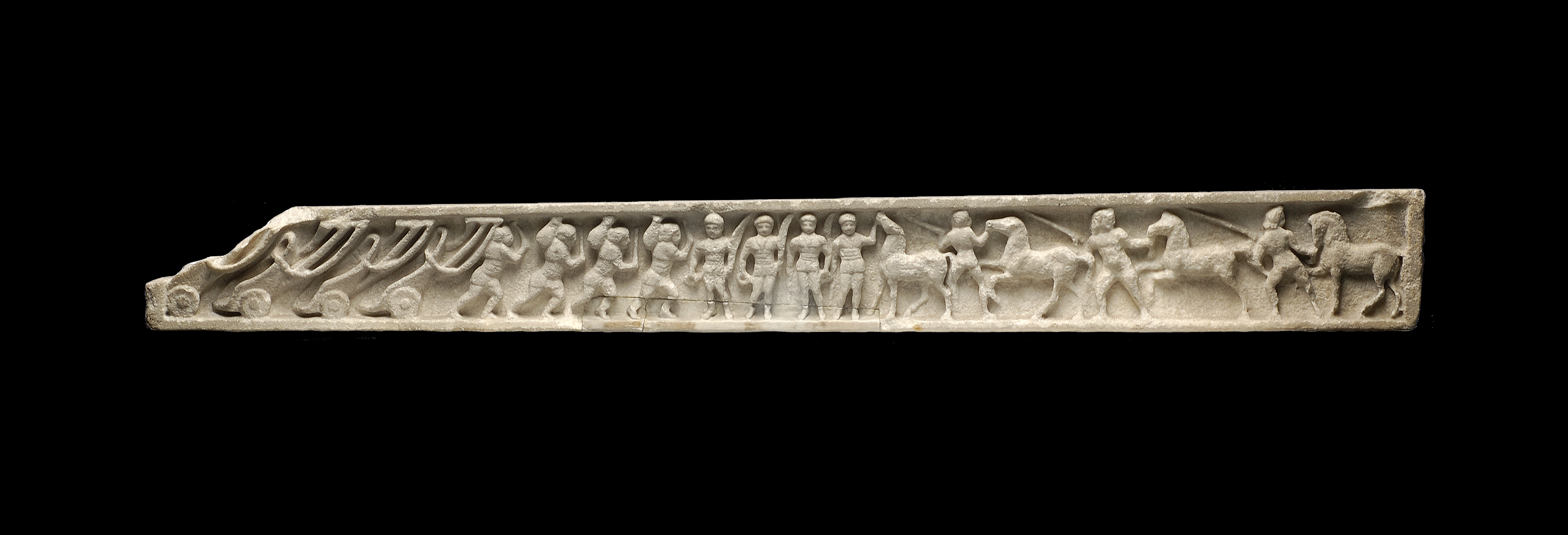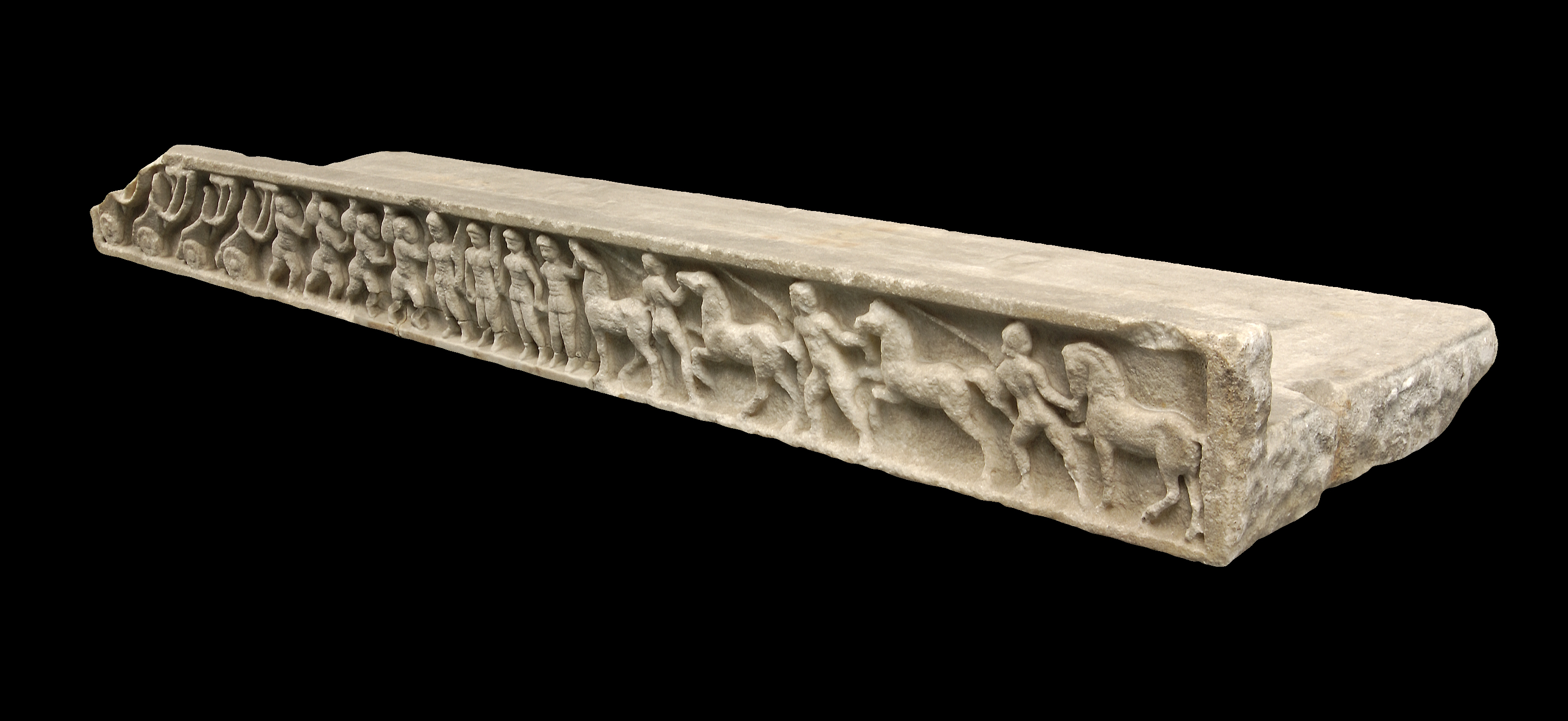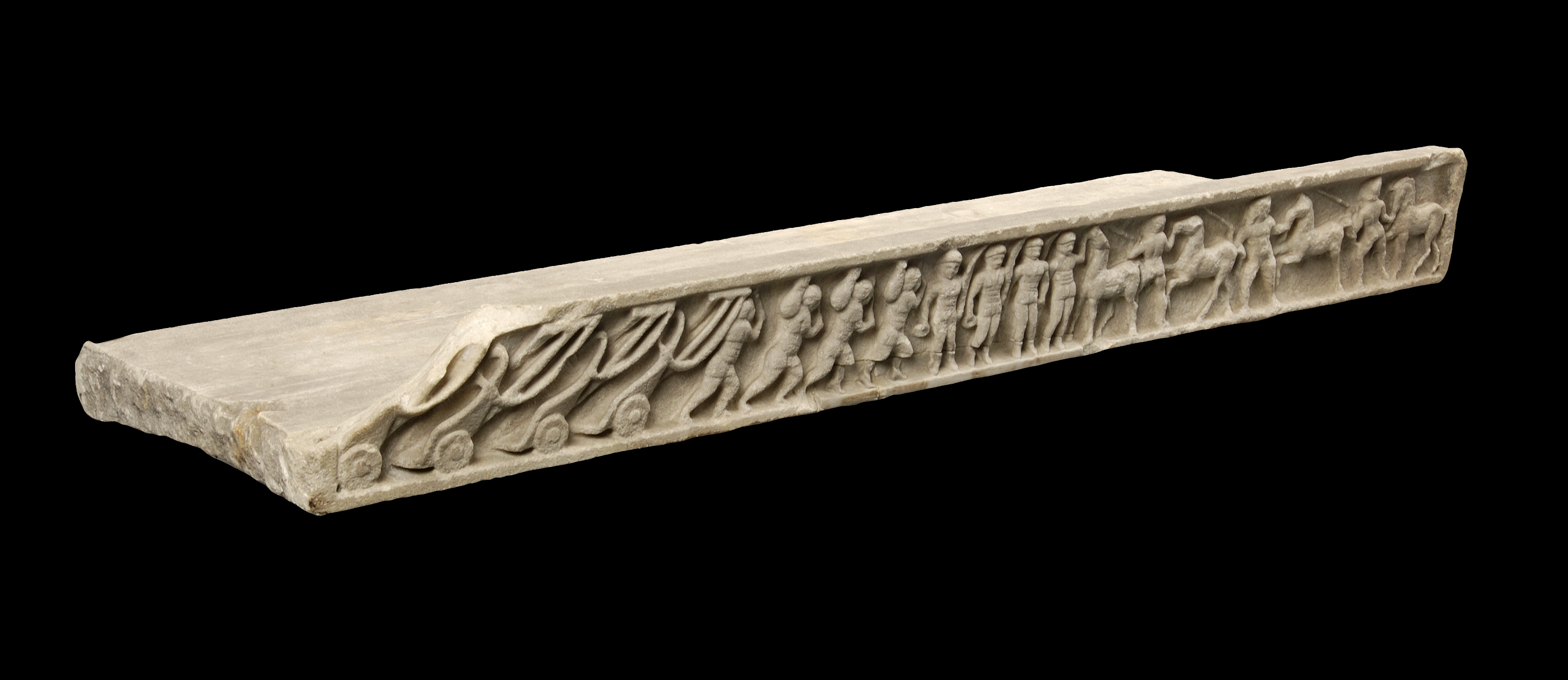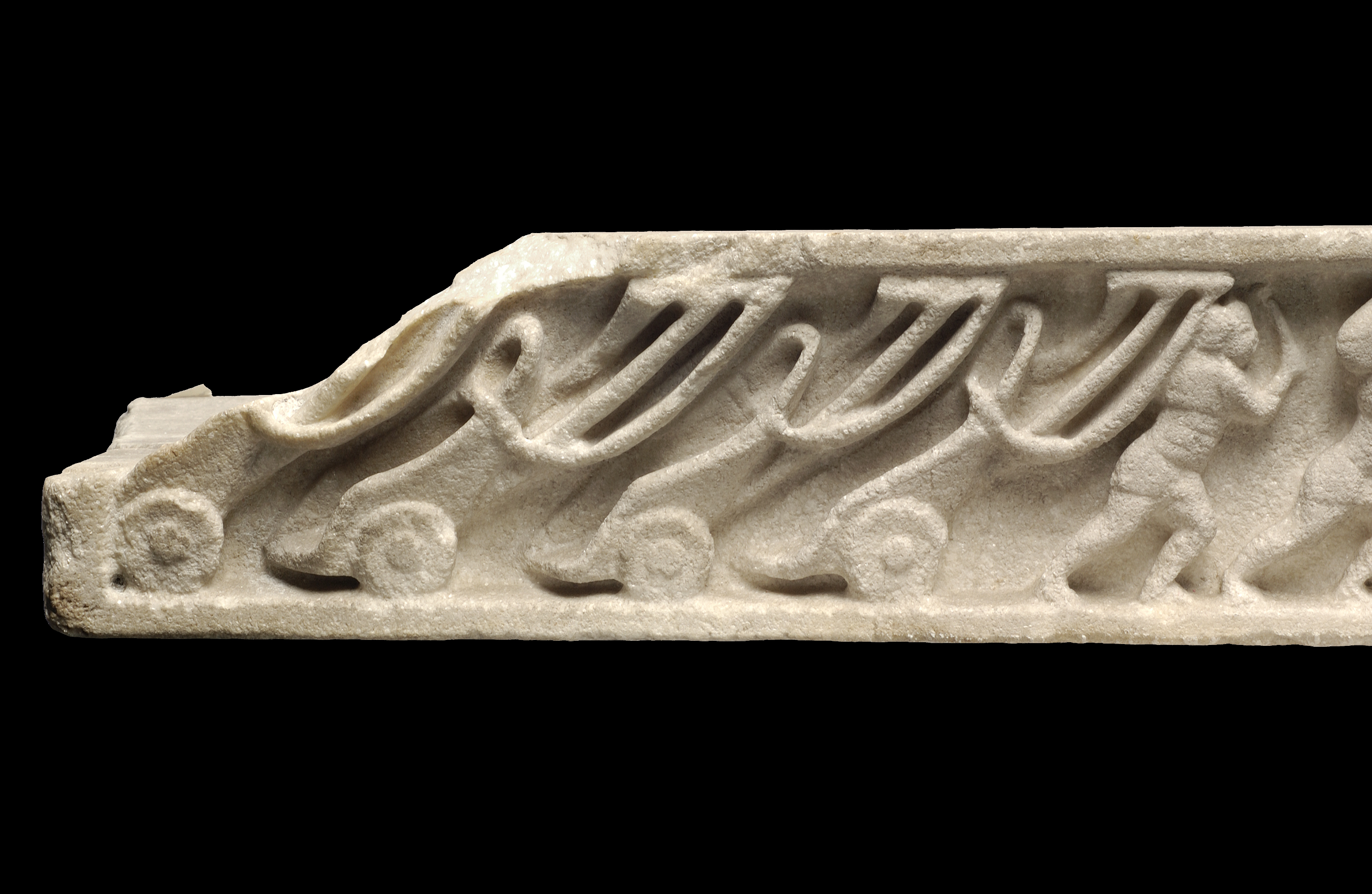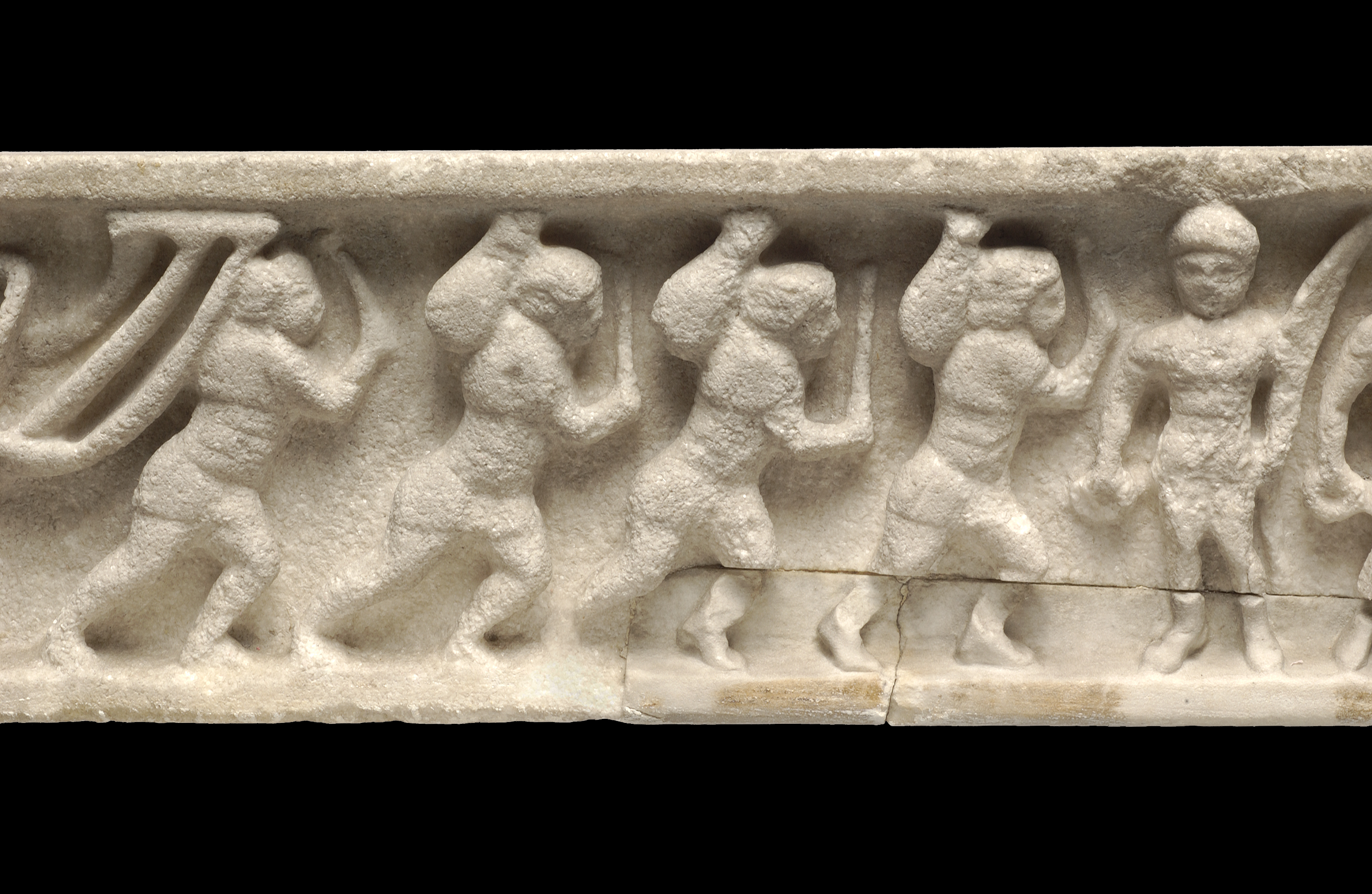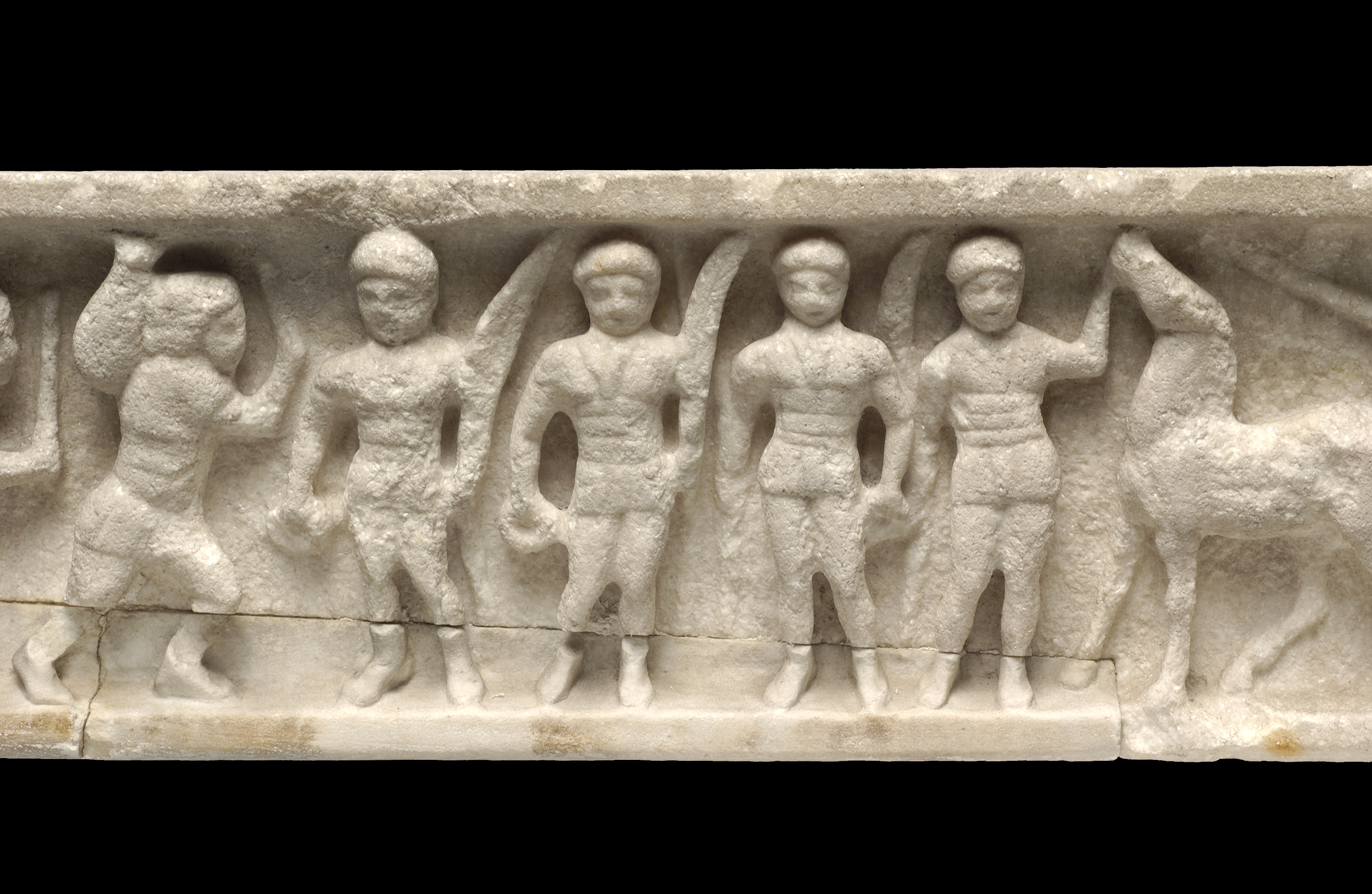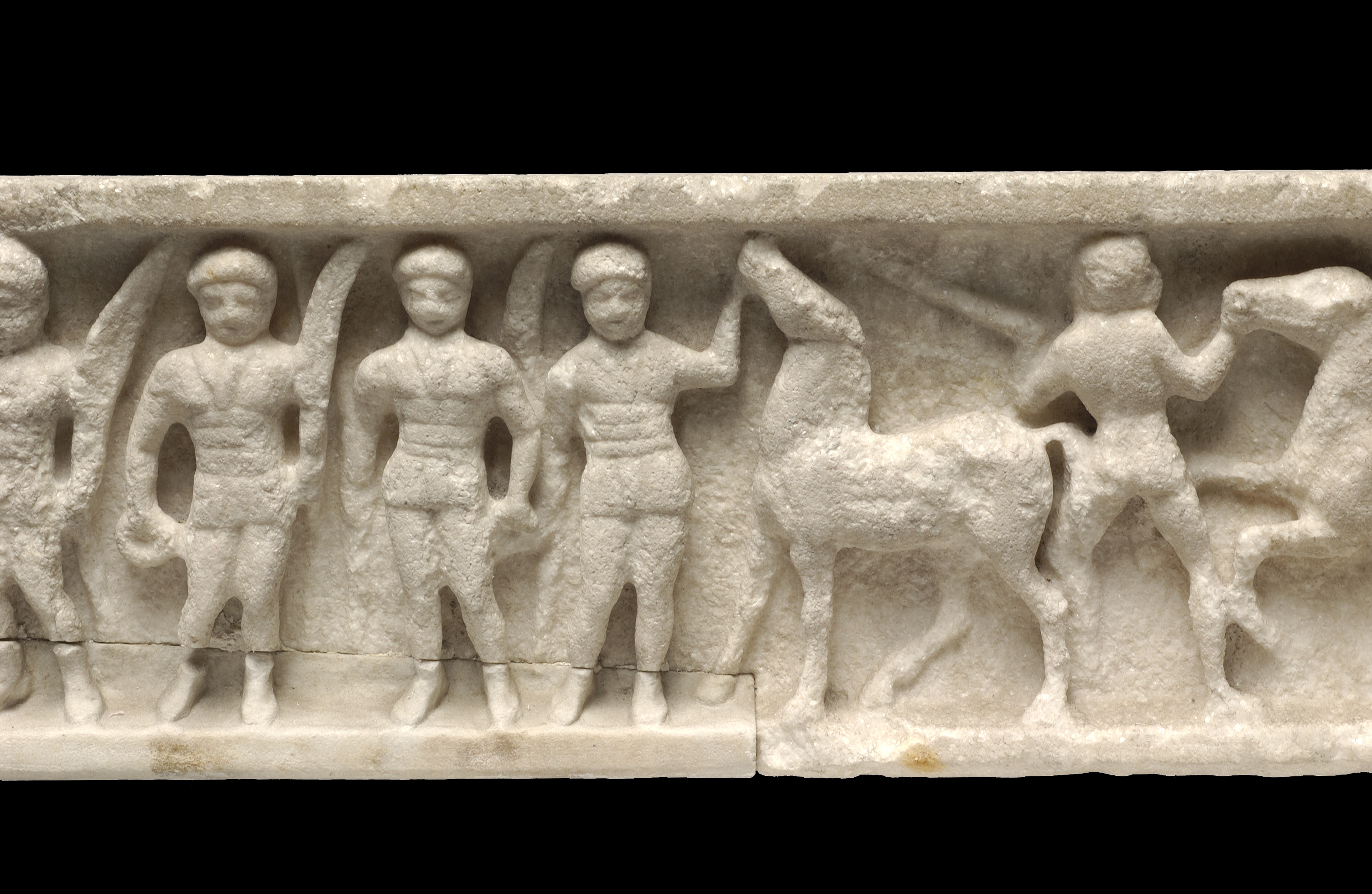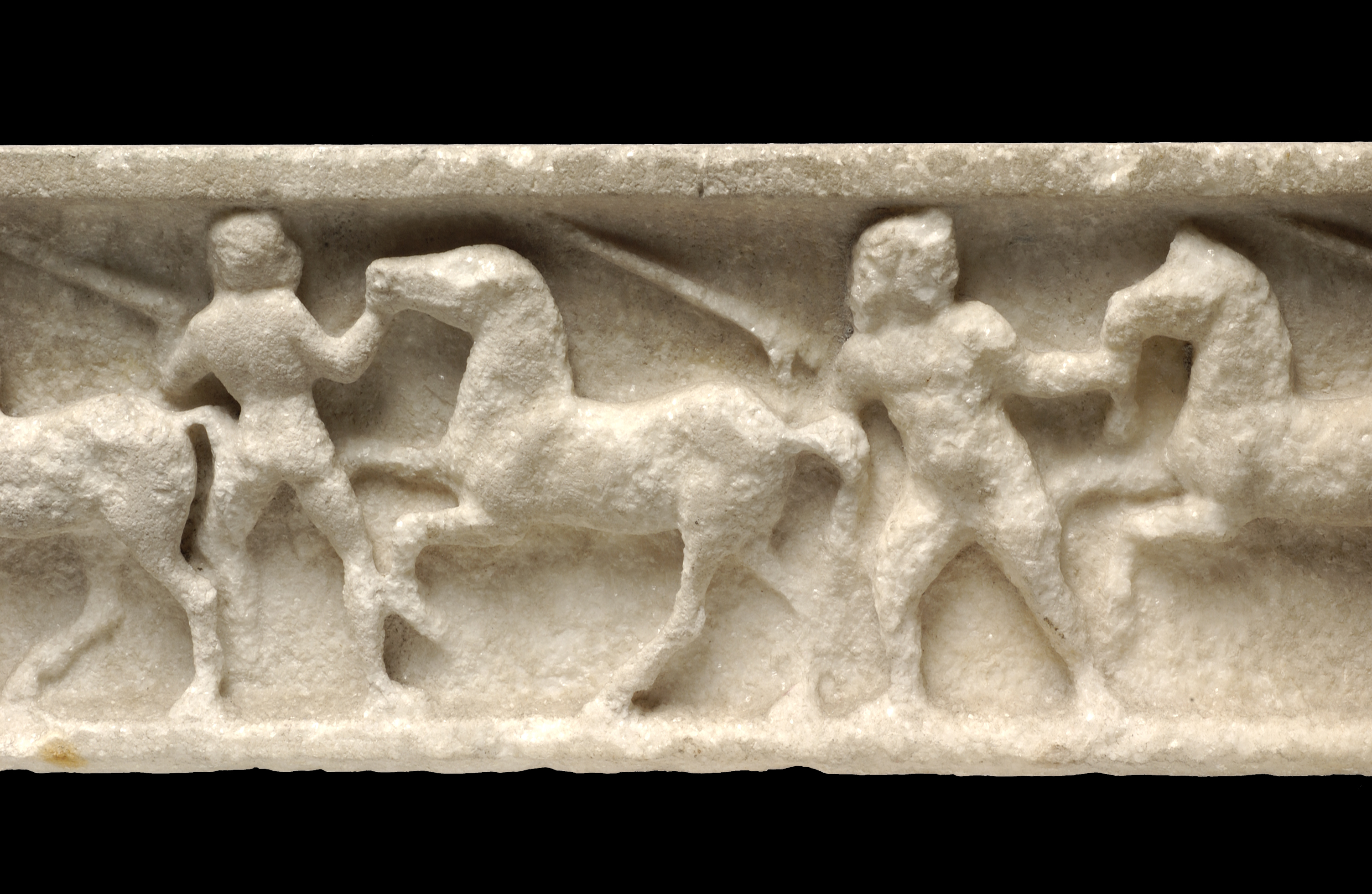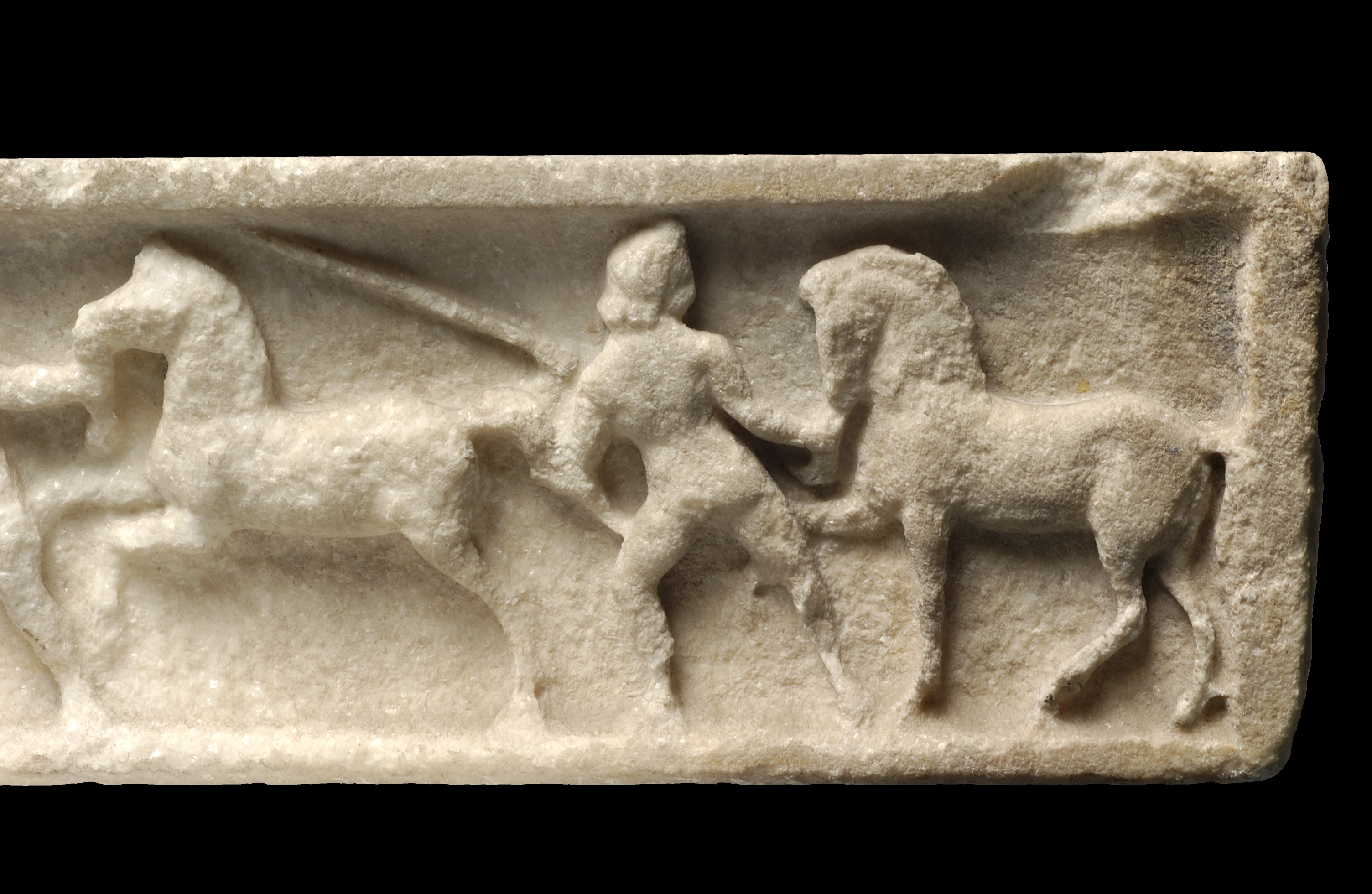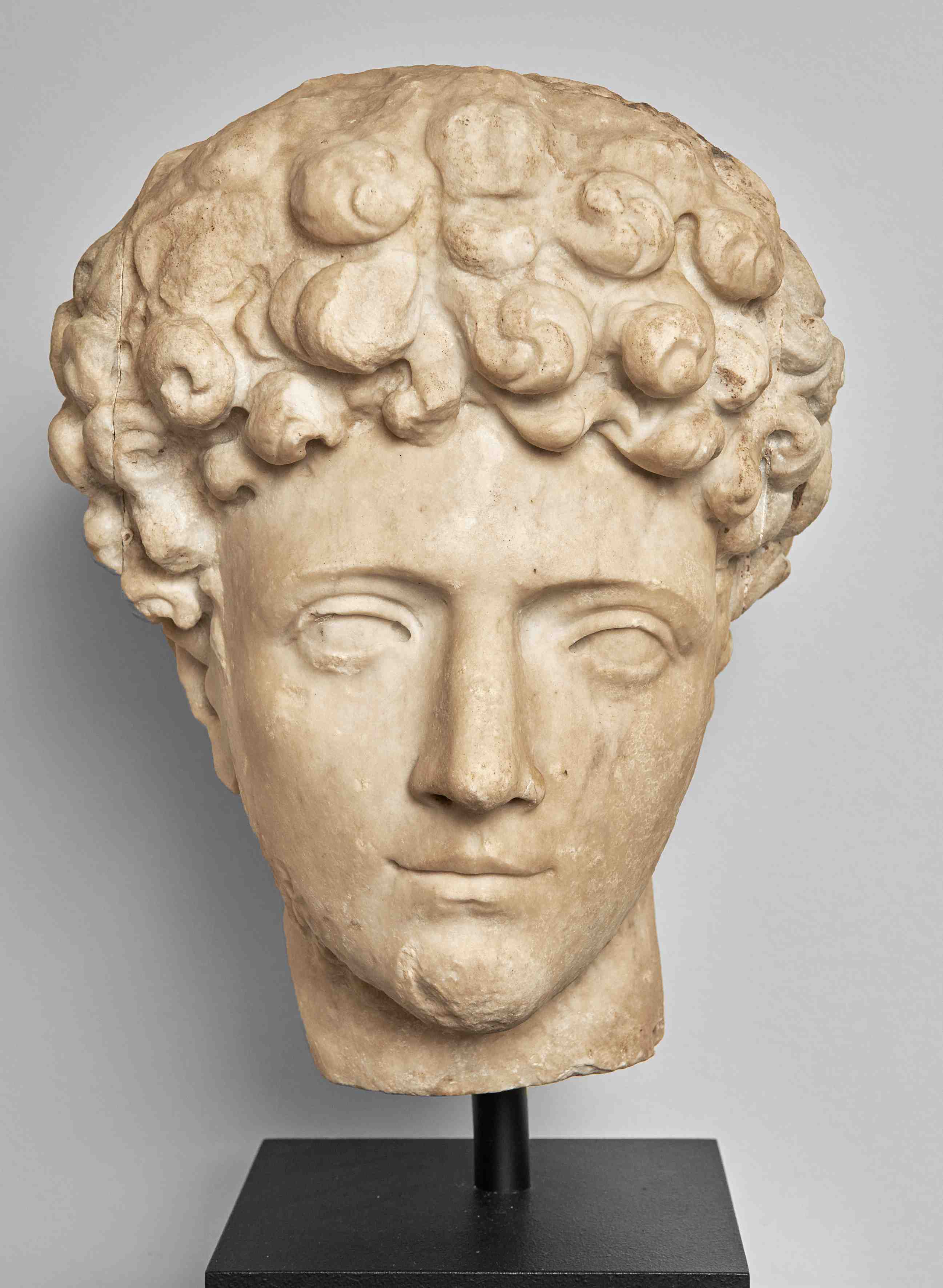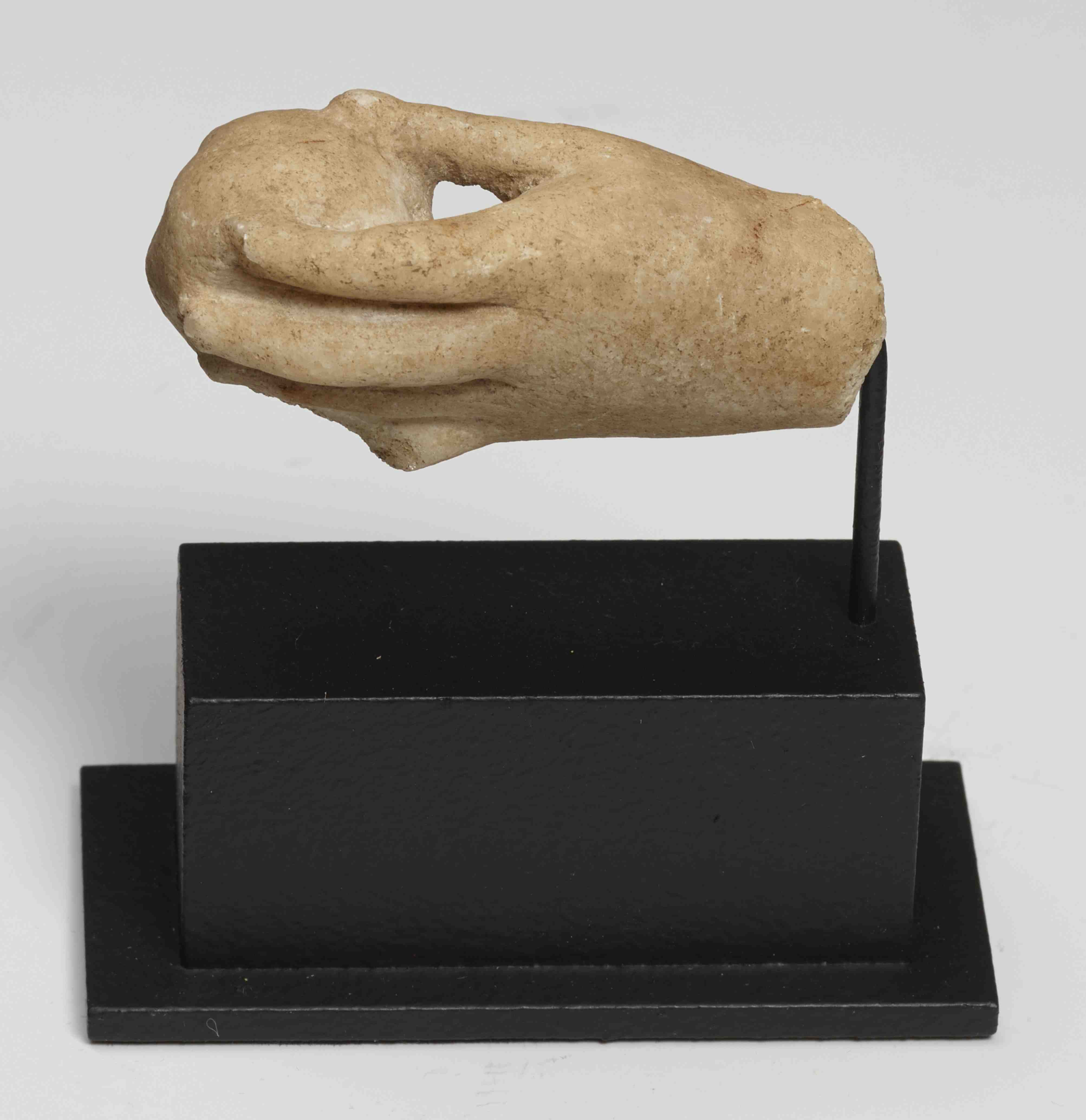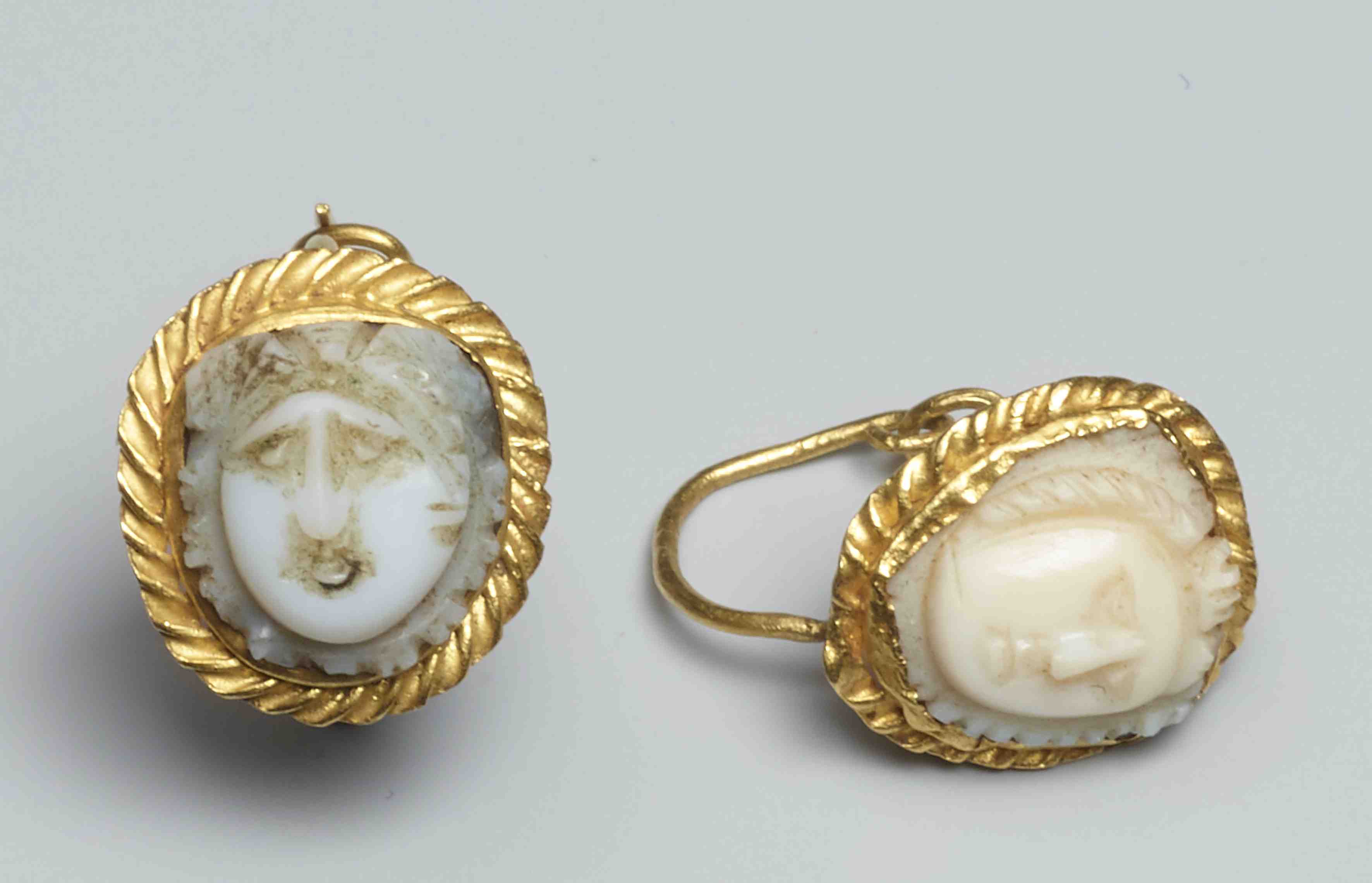Marble Circus Sarcophagus Lid
With the Duke of Buckhingham, Stowe, Buckinghamshire
William Lowther (1787-1872), 2nd Earl of Lonsdale, Sculpture Gallery, Lowther Castle, Penrith, Cumberland, acquired between 1848-1868, acquired from the above
By descent to Lancelot Lowther (1867-1953), 6th Earl of Lonsdale (Maple & Co., Ltd., and Thomas Wyatt, Penrith, Cumberland, Lowther Castle, near Penrith, Cumberland. The Major Part of the Earl of Lonsdale's Collection, April 29th-May 1st, 1947
Phillips Antiquities, London, 5 October 1989
Private collection, acquired at the above sale
Adolf Michaelis
Ancient Marbles in Great Britain, Cambridge 1882, 493f.
L.J. Elferink
Lekythos: Archäologische, sprachliche und religionsgeschichtliche Untersuchungen, Amsterdam 1934, 58
Christa Belting-Ihm
Ein römischer Circus-Sarkophag. Jahrbuch des Römisch-Germanischen Zentralmuseums Mainz, 1961, 195ff. Taf. 74, 76, 1-3
Alan Cameron
Porphyrios the Charioteer, Oxford 1973, 47
Katherine M.D. Dunbabin
The Victorious Charioteer on Mosaics and Related Monuments, in: AJA, 1982, 67
John H. Humphrey
Roman Circuses: Arenas for Chariot Racing, California, 1986, 197f. ill. 100
Konrad Schauenburg
Die stadtrömischen Eroten-Sarkophage, Fasz. 3: Zirkusrennen und verwandte Darstellungen. (Die antiken Sarkophagreliefs 5.2.3.), Philipp von Zabern, Mainz: 1995, 67-68 cat. nr. 27, pls. 56, 1-4
Raimund Wünsche-Florian Knauss (eds.)
Lockender Lorbeer: Sport und Spiel in der Antike, 2004, 20
J. Chamay, M. Guggisberg and K. Anheuser
L’aurige et les chasseurs. Chef-d’œuvre d’orfèvrerie antique. Chaman, Neuchâtel: 2007, 25 (with illustration), p. 225 cat. nr. 10
E. D'ozio e.a.
Gli atleti di Zeus. Lo sport nell’antichità, Museo d’arte Mendrisio, 2009, 204
Esaù Dozio
Azione - Emozione, Chaman 2011, 37
Sinclair Bell
A Rediscovered Roman Circus Sarcophagus Lid: A Comparative Iconographic Study. (forthcoming)
Staatliche Antikensammlung und Glyptothek München, 2004
Gli atleti di Zeus. Lo sport nell’antichità, Museo d’arte Mendrisio, 12 septembre 2009 - 10 janvier 2010
On the left, four empty chariots, next to them four boys with sacks (possibly filled with hay) and whips (?). In the center, four youthful charioteers with victory symbols (wreaths and palm branches); the rightmost driver is holding a horse. To the right, three more young male attendants are bringing horses, each holding a 'kentron' in their right hand. The number four for the drivers remains puzzling. Do they represent four 'factiones'? But only one could have won.
Note
The described scene on the sarcophagus lid likely portrays a chariot racing theme, a motif that held great popularity in Roman art. This choice of imagery reflects the important cultural significance of chariot racing in Roman society, often used to symbolize the journey of life or the pursuit of glory even in death.
In ancient Rome, chariot racing teams were known as factiones. These were typically represented by four colors: Red (Russata), White (Albata), Green (Prasina) and Blue (Veneta). Based on the analysis of other sarcophagi of this type, it is likely that the colors of the four factions would originally have been painted onto the sarcophagus. We should assume that was the case here as well.
The representation of four drivers on this lid might be a reference to these four factiones, representing the complete spectrum of Roman chariot racing. More intriguing is the aspect of having four drivers with victory symbols. Rather than portraying a specific race outcome, this imagery likely serves a more symbolic purpose, aligning with the funerary context of the sarcophagus. It may represent the hope for victory in the afterlife or celebrate the deceased's life accomplishments. More than 100 sarcophagi of this type are known, either completely preserved or in fragmentary condition. Within this corpus, this sarcophagus lid is completely unique.
